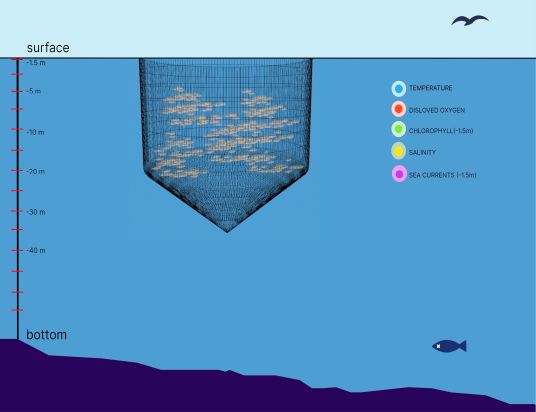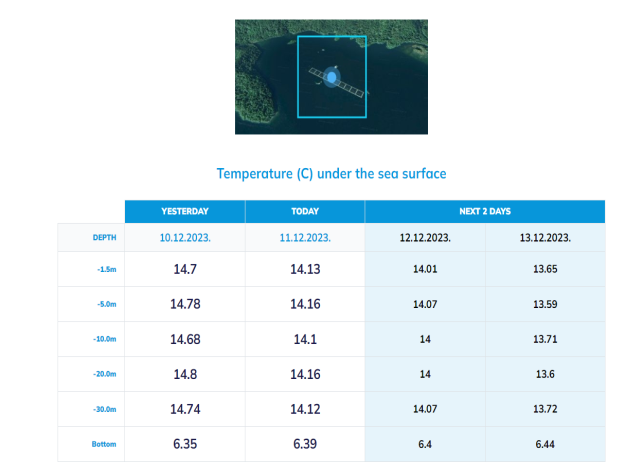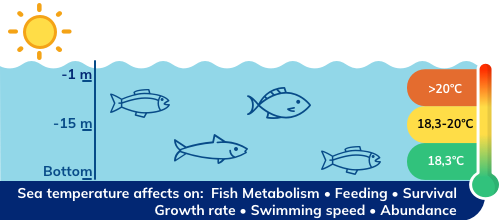All data is driven from Copernicus - European Union's Earth Observation Programme, dedicated Sentitel satellites and numerical models

Every day from surface to bottom
Data is sourced from Copernicus, the EU’s Earth Observation Programme*, utilizing Sentinel satellites and numerical models. Our KS models also integrate sea surface stations measurements.
1.Accurate daily data from multispectral satellites, verified by earth/sea stations
2.We ensure data reliability within a few hundred meters, depending on location.
3.Robust Precision from Satellite measurements with +/-1 degree surface temperature error.


Water temperature is crucial in aquaculture for well-being, feeding, survival, growth and reproduction.

Insufficient levels of dissolved oxygen will result in fish being compelled to move to colder and deeper water layers, heightening the strain on their bodies, and in severe cases, leading to atypical fish mortality.

Concentration of chlorophyll a at the sea surface of a fish farm is essential for describing water quality and predicting incoming algal bloom which is lethal for marine life. Unusual increases in concentration can be used as a warning.

Salinity Impact on Saltwater Fish:

Sea Currents Impact on aquaculture fish: